Simple PHP Secure REST API
Read more at https://www.phpclasses.org/package/12263-PHP-Create-a-secure-REST-APIs-using-on-RSA-keys.html#2021-10-21-16:59:47
We all know blogging and personal portfolio sites have been very important for designers looking to increase their visibility to clients and others who admire their work.
But some key developments have risen up over the past decade, which, in my opinion, are threatening to eliminate the need for a personal website.
Information is spread so quickly these days through social media that it’s impossible to keep up with all of it, and the truth is that potential clients and people who like your work are rarely going to take time out of their busy day to visit your website.
These days, you don’t really need your own website to market yourself as a designer (I don’t have one). You can reach out to the design community via social media, as we saw earlier, but there are other ways to distribute your content.
You can do guest posts on other blogs, create a newsletter list, or even do something like a podcast. All of these things will spread the word much faster than simply creating content and putting your stuff on it.
If you’re looking to market your services as a designer, then time is always of the essence. Yes, you can still build your personal brand extremely slowly, relying on organic search to send you tiny increments of traffic over a period of years. But who has time for that? You’ve got clients to get and a reputation to build, pronto!
Let me be clear here: I definitely think that websites can be an important part of your marketing plan. They do provide a certain legitimacy to a designer’s online presence that social media doesn’t – at least not yet.
At a later date, you can make your personal blog as elaborate and inviting as you please. But if you’re just starting out and need a boost to your visibility, ditch the personal site and start circulating your content in a broader variety of places.
 The personal portfolio of Chungi Yoo
The personal portfolio of Chungi Yoo
You might think that blogging is a straightforward thing: you get a blog, write some posts, and voila – now you’re a blogger. That used to be the case about 8 or 9 years ago, but now, the market is saturated with others doing the exact same thing.
The explosion of social media has also affected the landscape quite a bit. Designers have far more choices through which to spread their message, and each one has its pros and cons.
Should you be blogging on your own website, or is there a social media outlet that’s more ideal for the type of work that you do? The best way to find out is to try a few of the most popular channels: Behance, Facebook, Dribbble, et cetera, and figure out exactly what’s right for you.
Are you an Instagram person, or would Twitter or Pinterest be more your style? What does your audience respond best to?

The personal portfolio of Raffaele Sabbella
Again, I’m not saying that having your own website or blog isn’t important at all. But there is definitely a right way and a wrong way to blog as a creative professional, and, I’m sorry to say, most people are going about it the wrong way.
The point isn’t to put something on your blog and have it live there forever. If you want to change minds and affect people with your ideas and your work, it needs to float out there in cyberspace, far from home, and find new homes with others who find the most value in it.
Sharing your knowledge and ideas helps connect you with others in the industry whom you can bounce ideas with. They can also carry your message into far-flung corners of the industry which you might not be able to reach yourself.
This is the science behind “viral” content. A group of readers finds your content valuable, and they each share it with their friends. Those friends find it equally valuable and share it with their friends, and so on.
Designers like Jessica Hische, Marian Bantjes, and Michael Bierut are all vocal about their opinions on the design industry, and many people know them as much for that as they do for their beautiful designs.
The more visible you are, the more people trust you, and the more your opinions can be far-reaching – much more so than your actual design work.
The post Is It Really Worthwhile Having a Personal Portfolio? appeared first on Speckyboy Design Magazine.
When you hear the word “hacker,” what do you think of? You might picture someone in a darkened room typing furiously on a computer keyboard and saying, “I’m in.”
But in real life, hackers are often far more sinister, and they pose a danger to your WordPress (WP) site.
Fortunately, you don’t have to leave yourself vulnerable to that danger. You can install WordPress plugins that will help prevent attacks and minimize your chance of a site breach. But how do you know which ones to get? What are the best WordPress security plugins?
We’ll answer that question in the list below, so read on to learn more. You can also watch this video to learn more about website security!
Then consider partnering with WebFX’s team of over 300 experts for our web design and development services. Just call 888-601-5359 or contact us online to get started!
We don't just want to tell you about the beautiful work we do
We Want to Show You!
We’ve built over a thousand
View Our Past Work
Websites in industries like yours
WordPress plugins are a fantastic way to help make your site more secure, but there are quite a few plugin options out there. Fortunately, we’re here to help you narrow down the list to the best options.
Here are nine of the best WordPress plugins for your website!
Price: $299+ per year (free version available)
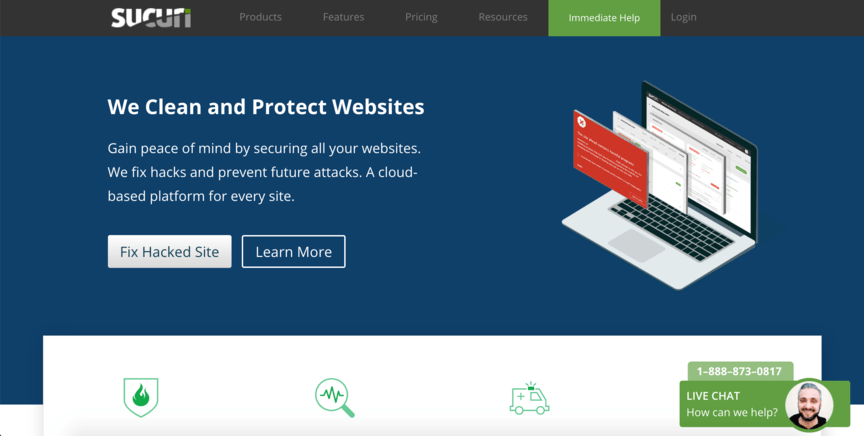
If you’re looking for a great all-in-one plugin for your site, Sucuri is one of the best. There’s a reason you’ll find this one at the top of most WP security plugin lists. Here are just a few of the features it offers:
If you only want to have a single plugin, Sucuri is the one for you.
Price: $23
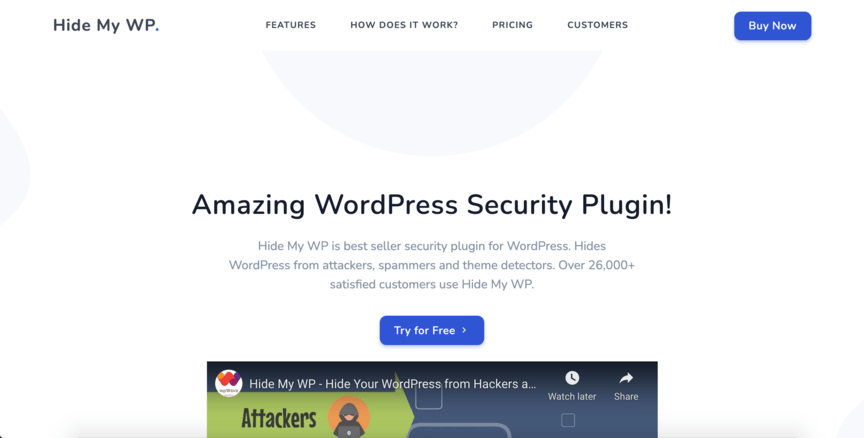
If a hacker knows your site runs on WordPress, it makes it easier to hack into it, since they know what content management system (CMS) you have. But if they can’t tell what CMS you use, they’ll have a harder time accessing it. That’s the value in the Hide My WP plugin.
Hide My WP will do exactly what the name suggests — it’ll hide the fact that your site runs on WordPress, making it more difficult for hackers to break in. It can also detect security threats and notify you of them.
Price: $29+ per year (free version available)

Security Ninja is a great preventative WP security plugin to have on your site. It specializes in running security tests that check for weak points that hackers might break through. For example, it can simulate a hacking attempt to see which passwords a hacker might easily guess.
Using this WP plugin can help you identify points you can strengthen or reoptimize on your site.
Price: $5+ per month (free version available)
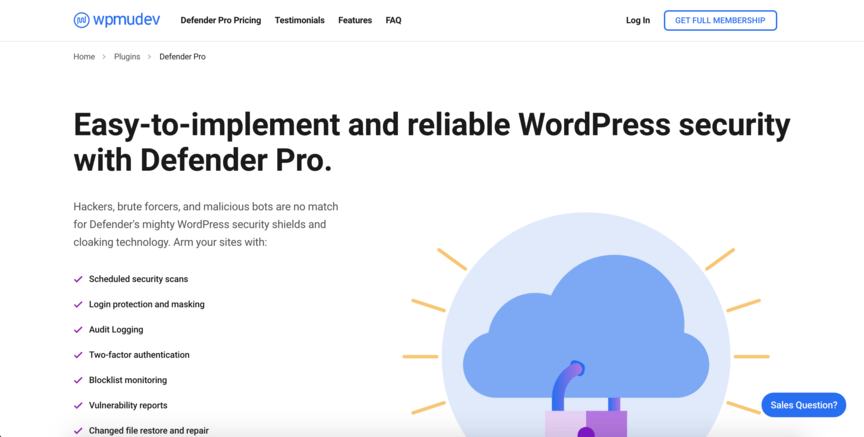
Where Security Ninja scans your site for weaknesses, Defender scans it for suspicious code. Think of it like this — if your site is a castle, Security Ninja is checking for weak points in the walls, while Defender is looking for any enemy spies who may have slipped inside.
When Defender finds any discrepancies between the WP install and the directory, it will report them to you and allow you to restore the original file quickly.
Price: Free
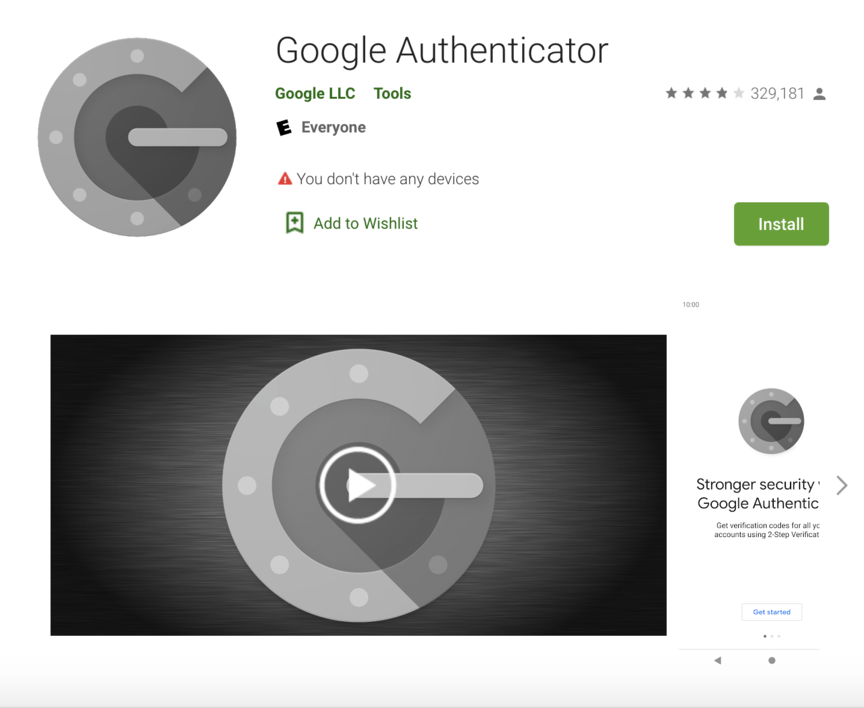
Google Authenticator is a WP security plugin that offers one basic feature: Two-factor authentication for your website. Most plugins don’t include this feature, which is why Google Authenticator earns a spot on this list.
With two-factor authentication, you can give your site an added layer of security by requiring users to respond to a push notification or answer a security question when they log in to their account on your website. That makes it much more difficult for hackers to penetrate your site.
Price: $89+ per year
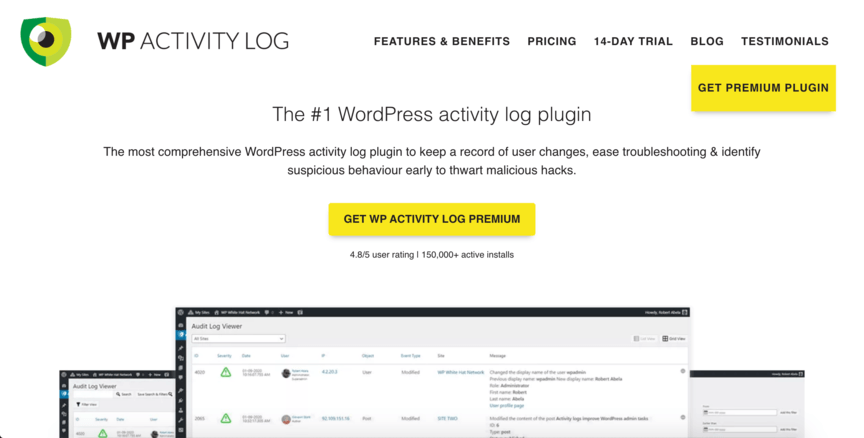
If there are any suspicious users on your site, you’ll want to find out about it — and with WP Security Audit Log, you can. WP Security Audit Log monitors activity on your website, alerting you to anything suspicious it sees. It even allows you to log users out at the click of a button.
As a result, you can have greater control over everything happening on your site, nipping any potential problems in the bud.
Price: Free
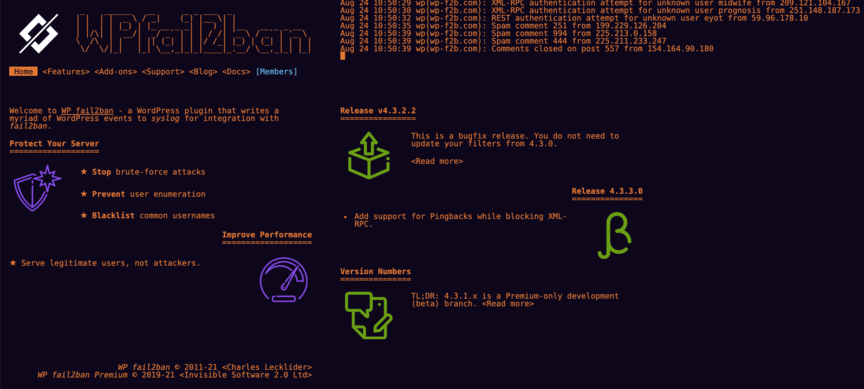
Sometimes hackers enter your site through complex coding processes — but other times, they just put in password after password until they guess right. That method is called a brute force attack, and you can prevent it with WP fail2ban.
WP fail2ban takes steps to protect against brute force attacks, like limiting the number of times a user can input an incorrect password before being locked out. It’s simple but effective, making it one of the best WordPress plugins for your site.
Price: $99+

Sometimes, despite all your efforts, hackers may still break into your site. When that happens, you’re often left with the task of cleaning up the mess they leave behind. That’s where MalCare Security can help.
MalCare is easily one of the best WordPress plugins because it makes it easy for you to clean up after a site breach. You can remove malware with a single click!
Though MalCare does come in a free version, you’ll want the premium version for the one-click malware removal feature — the free version only offers limited malware detection.
Price: $39+ per year
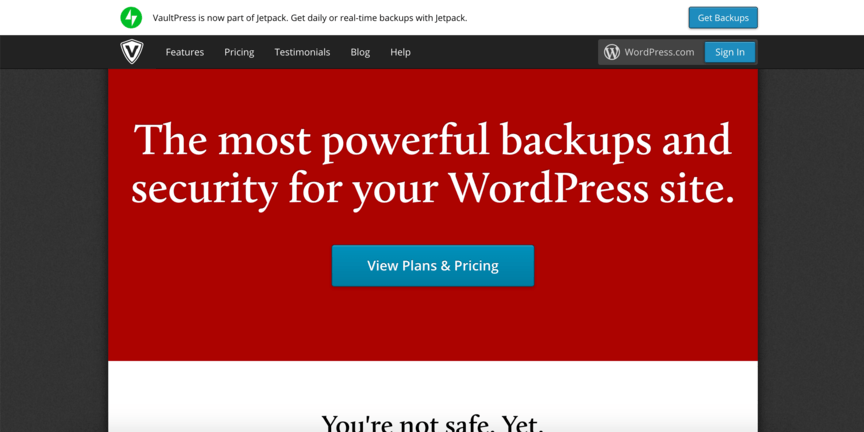
Some attacks on your site may end up destroying valuable pages or files, forcing you to rebuild it all from scratch. No one wants to be in that situation, which is why you can benefit from using VaultPress.
VaultPress will routinely back up your website, and if you ever lose the site, it can restore it in the aftermath. Using VaultPress can ease your fears of losing your website to a hacker. It can also help you migrate your site or scan your files for malware.
Over 90% of WebFX clients continue partnering with us into year 2 of their campaign.
We Form
Longterm Partnerships
Having the right WP security plugins is a start, but for your site to truly be secure, you have to know how to optimize it. WebFX can help you do that, as we’ve been designing websites for over 20 years.
With our web design and development services, you’ll get help optimizing for any WP plugins that you might choose to use. We’ll also look for other ways to boost your website security, from using HTTPS to providing quarterly CMS security patches.
To get started with us, just call 888-601-5359 or contact us online today!
The post What Are the Best WordPress Security Plugins for your Website? appeared first on WebFX Blog.
Virtually every software application evolves over time. For users, keeping track of the additions, subtractions, and bug fixes can be difficult. And, the more users an app has, the more challenging it is for developers to keep everyone in the know.
WordPress faces a unique uphill climb in this area. As a volunteer-driven, open-source project, there is a constant stream of changes. Various teams tackle their assigned tasks and, somehow, everything comes together and makes it to release.
It’s a testament to their hard work. But it also means that information regarding new features and compatibility changes can be spread amongst these different channels. Thus, they’re often difficult to locate.
For casual users (i.e., those who don’t follow every new development), this frequently leads to an information gap. When it comes time to apply an update to WordPress core, that could leave these users unaware of what’s included and scrambling to catch up.
Why is this so important? Let’s talk about what’s at stake, along with some ways to potentially close that gap.
WordPress has seen several major changes in recent times. Features such as the Gutenberg block editor have reinvented how we work with the content management system (CMS). As it provides a relevant example, that’s the feature we’ll explore here.
For all of the community debate during the runup to launch, there were still users who had little or no idea that a change was coming. For those of us within the WordPress knowledge bubble, that may be hard to believe. But it speaks to the issue at hand.
There is a group of project contributors, web designers, and business people who pay close attention. They were able to stay on top of the information trickling out about the new editor. They were also the ones testing the beta plugin, becoming acutely aware of what the change would mean to the average website.
For others, that news may have completely missed them. True, there were assorted teasers within the WordPress dashboard before the launch. But some may have simply dismissed them without a full understanding of what was being communicated.
The result could leave you completely unprepared. Imagine logging into your website one day and seeing that the entire content creation process has changed. In addition, undetected theme and plugin incompatibilities posed their own potential to wreak havoc.
As for the information itself, it was scattered. There were several posts spread throughout various sections of WordPress.org. Outside of that official source, one would have to frequent sites such as WP Tavern or even this one. Otherwise, your only chance to get a detailed explanation would be through the odd link on social media – if you happen to follow relevant feeds.

To be clear, any difficulty in accessing information isn’t due to a lack of effort. Indeed, the project’s dedicated volunteers can only work through the channels available to them.
The way I see it, the issue is more of a structural one. There currently isn’t an official one-stop location that puts all the need-to-know information in a single place. We’ll discuss some possible solutions (feasible or not) in a moment.
Outside sources can be quite valuable but are sometimes hit and miss in terms of what they cover. For instance, they may offer an outstanding Gutenberg tutorial for developers – but nothing that focuses on the everyday user.
And, let’s face it, there aren’t a lot of publications out there that are solely dedicated to WordPress news. It may be part of their mission, but it takes a lot of resources to provide the whole picture.
Then there are the users themselves. With a worldwide user base and all skill levels represented, it’s going to be nearly impossible to reach them all.
Still, it’s worth the effort to get the word out to as many people as possible.

Realistically speaking, there probably isn’t a silver bullet that will bridge the WordPress information gap. But there are a few things that, when combined, could certainly help to keep more users in the know. Here are a few ideas:
Getting the details of upcoming changes usually requires sifting through a variety of posts on WordPress.org. These items may be strewn about the site, but are regularly updated.
Perhaps a dedicated, user-friendly page that focuses on the most impactful developments could bring these posts under one umbrella. That is, changes and features that are likely to affect a large segment of users and developers. I’ll leave defining the exact criteria to the experts.
But there’s plenty of room for creativity here. For example, the page could be sorted by topic, release, or even target audience (site administrators, developers, content creators, etc.). From there, readers could access a summary of the change and an archive of related posts.
This would provide users with an easy-to-digest source of information – one they can come back to time and again. With that in hand, they can gain an understanding of what’s happening and prepare their websites in advance.
It might also make for an engaging dashboard widget on WordPress installations. When someone logs into their website, they’ll have a summary of what they need to know right at their fingertips. Of course, care would need to be taken so as not to interfere with their ability to get things done.
The WordPress community does a fantastic job of sharing information. Whether it’s code snippets or a helpful plugin, they can be counted on to pay it forward.
And, something tells me that having a well-organized source for new developments would encourage them to share even more. They’d have the opportunity to pass along official details, along with their own related content.
Helpful items like tutorials and summaries would add further context to what lies ahead. And the great news is that many people are already creating this type of content. The difference would be that, combined with the official source, an even bigger impact could be made.
In theory, users could first view the official rundown of a change. Then, they could dive into a community-driven tutorial that helps them better understand it and act accordingly.
Users, whether they’re website owners or designers, also have a key role to play. However, not everyone is keenly aware of the importance of staying informed.
Therefore, education is a big part of the solution. By helping them develop good website maintenance habits, users will be more likely to stay on top of upcoming changes. For some, just the mere practice of logging into their dashboard once a week could make all the difference.
WordPress is already taking some great steps in this area. Through their Learn WordPress initiative, users have access to a variety of helpful content. It can foster a connection that keeps people actively interested in the project.

Even for those of us who follow WordPress closely, it’s easy to lose track of new features. For those who are a bit less involved, the ability to keep up is even harder.
For WordPress to continue growing, this information gap has to be narrowed. An informed user base is crucial for security, stability, and pushing the software forward.
The suggestions above are just that. I hope that they can serve as a catalyst for further discussion.
Regardless of how it’s implemented, opening up further lines of communication with users is a win for everybody.
The post For Casual Users, Information on New WordPress Features Can Be Hard to Find appeared first on Speckyboy Design Magazine.